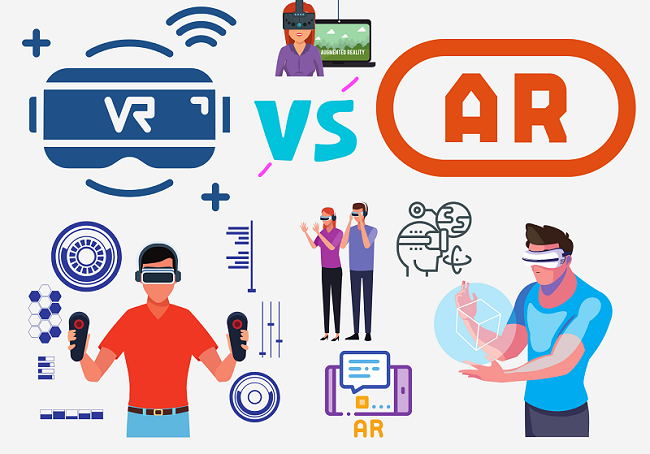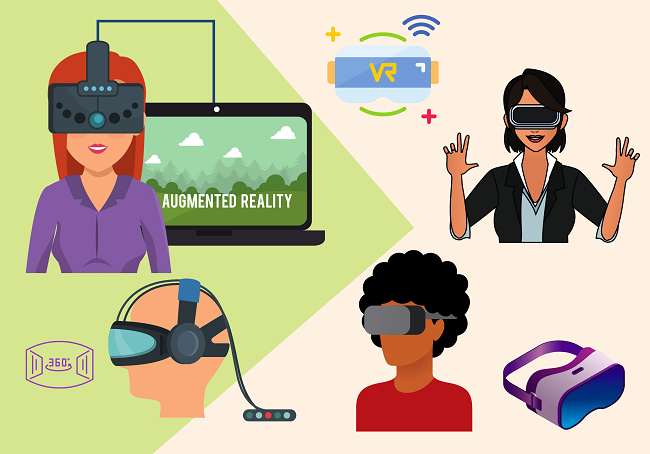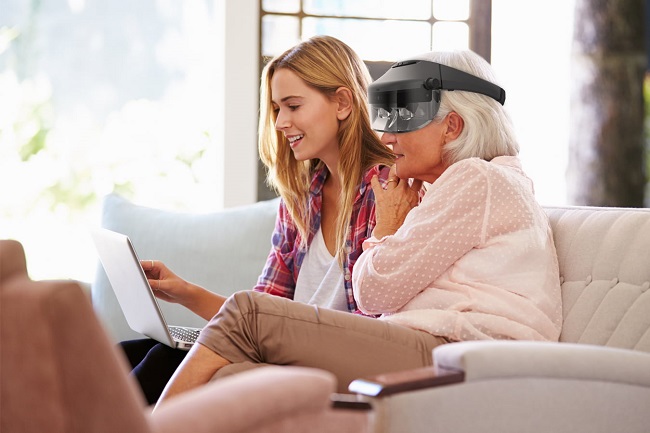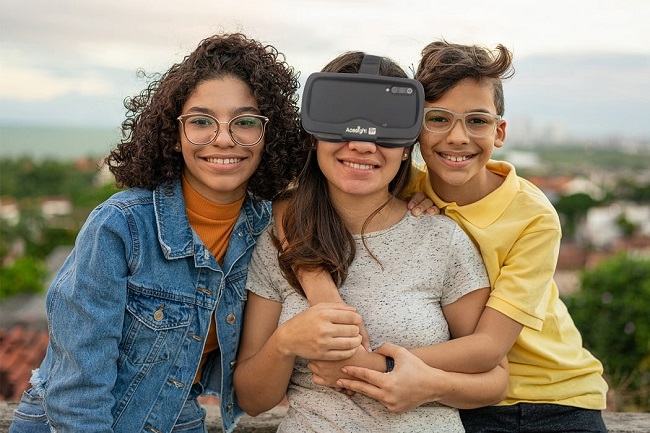Virtual reality (VR) and augmented reality (AR) have been incorporated into a variety of different fields -- you’re able to choose between a variety of advanced VR or AR low-vision electronic glasses (E-glasses) in a low-vision store. So, how do these two technologies differ? And how are they being applied for low vision aids?
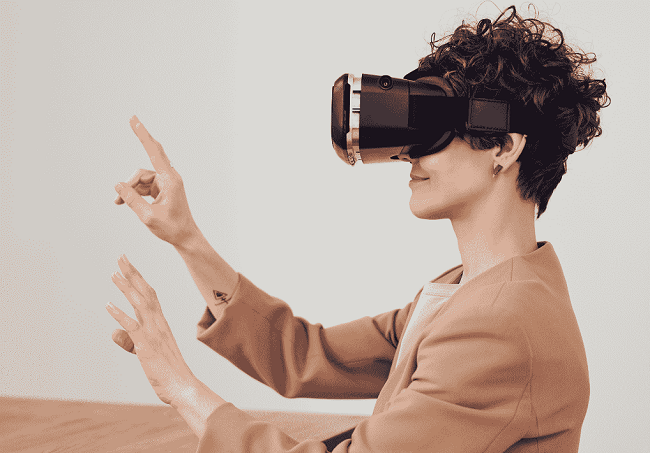
Smart Electronic glasses (E-glasses) Vs. Bioptic glasses
What’s low vision electronic glasses (E-glasses)? Low vision electronic glasses (E-glasses) are good choices for those who want to free their hands and do outdoor physical activities. The use of smart glasses enables people with limited vision to read print, do tasks requiring fine detail, or expand the range of their visual fields. Low vision smart glasses have the following benefits:
- the amount of magnification can be much higher
- the image can be manipulated and controlled
Compare to bioptic telescopic glasses, low-vision electronic glasses (E-glasses) are simpler to use and have a more stylish design. Here is a simple comparison of low vision electronic eyewear and bioptic telescopic glasses.
| Low Vision Electronic Glasses (E-glasses) | Bioptic Telescopic Glasses | |
| Design | Modern Look | A Bit Odd Looking |
| Operation | Adjust by the Control Device | Need to Switch the Lens |
| Magnification | Resonablly 20x; Larger Magnification is Optional | Up to 25x |
| Navigation Function | Locate the Distance and Place Easily | Lack of Navigation function & Limit Peripheral Vision |
| Contrast Function | Multiple Contrast Settings | No Contrast Settings |
| Usage Advice | For Visually Impaired People (even with central visual field loss) or Legal Blindness | Not Recommended for Those Who Have Problems with Peripheral Vision or Depth Perception |
| Ensure Free Movement | Yes | No |
| Price | Cost More | Cost Less |
VR and Low Vision VR Electronic Glasses (E-glasses)
Virtual reality, or VR, typically makes use of a headset with an embedded screen that shows an immersive virtual world for users to explore. Most headsets of VR devices utilize head tracking technology, which enables users to gaze around their surroundings by simply moving their heads.
Most VR glasses for visually impaired people can assist them in gaining visual independence, even if they have eyesight acuity between 20/100 and 20/600, and a field of view of 10 degrees or more. It functions similarly to two binocular televisions by stimulating remaining photoreceptors, allowing for the brain to receive more visual information and achieve the maximum functional vision.

AR and Low Vision AR Electronic Glasses (E-glasses)
Augmented reality technologies, or AR, allow people to add digital elements to their actual environment. While VR transports you into a virtual world, AR is slightly different since it uses a panoramic field of glasses to layer digital visuals on the real environment around you.
Most low-vision electronic glasses (E-glasses) with AR technology allow individuals with visual impairments or legal blindness to see everything around them and ensure they can experience daily activities in high contrast color and high definition. Besides, AR electronic glasses (E-glasses) are of great help to improve the eyesight of people with peripheral vision loss and central vision loss. It works like a wearable panoramic electronic amplifier by giving the user the freedom to select the magnification while also guaranteeing that users can quickly detect the position of objects in reality. This allows the brain to get authentic visual information, and as a result, people with limited vision can experience normal visual experiences.
Are OrCam Series with AR or VR technology?

OrCam series are without AR and VR technology. The Orcam series primarily provides voice-activated visual impairment solutions; specifically, the Orcam smart camera takes a picture of your surroundings and then speaks the visual information directly to you. Orcam series can be attached to a pair of eyeglasses and is sufficiently portable. However, there is nothing can do to enhance your vision.
VR vs AR Low Vision Smart Electronic Glasses (E-glasses)
Design
Most VR headsets have fully enveloping designs (namely, covered eyes), which do not guarantee freedom of movement. Since the eyes are entirely covered, users are unable to walk on their own while wearing them. Therefore, this kind of low vision smart glasses are more suited for stationary activities like TV viewing, newspaper reading, video watching, PAD use, etc. Acesight VR, Irisvsion, eSight, and Nueyes e2+ are some popular product brands of VR low-vision electronic glasses (E-glasses).
Due to all open designs, AR low vision smart glasses offer clear vision –the field of view is nearly ideal. The open design allows user to monitor the surroundings and things with their peripheral vision, ensuring their moving safety in a comfortable or secure environment. Therefore, this kind of low-vision glasses is suited for both dynamic interaction (like outdoor walking or traveling) and stationary activities, such as distance viewing, book reading, studying in the classroom, etc. Acesight, Acesight S, and Oxsight are predominant AR low vision electronic glasses (E-glasses) products on the market.
Light Effects on Screen
Because the VR visual aids are covered eyes designs and are virtually isolated from the outside, the outside light source has a relatively limited impact on the brightness of the picture. Therefore, even in a relatively gloomy environment, the visuals on the screen of VR smart glasses could maintain reasonable brightness.
However, the open designs of AR glasses make them more sensitive to outside light sources than VR machines. As a result, in a dark environment, such as a theater or a restaurant with low lighting, the user might not be able to discern a bright and clear image.
AR and VR low-vision eyewear are emerging in an endless stream on the market, and the prices vary from hundreds to thousands. In the face of a wide variety of intelligent low-vision glasses, many people are confused when choosing. So what other aspects should be considered when choosing smart low-vision glasses?
Frame Rate
The frame rate for picture quality is crucial for wearable low vision aids. In general, the higher the frame rate, the better the immersion. So, the basic configuration of low-vision smart glasses should be in the range of 60 FPS to 120 FPS. Of course, less ambitious experiences may not require a higher frame rate, but if the frame rate is below 60, then users may experience lightheadedness and difficulty moving around.
For example, wearable low-vision productssuch as Acesight S and Acesight VR keep the frame rate up to 60 FPS and allow the user sees exactly what he receives. After using Acesight, the user can walk or turn his head without experiencing any lag in the image, and he won't experience migraines or vertigo either.
Field of View (FOV)
A perfect field of view would be 360 degrees, but it is not possible on a headset. Normally the FOV settings of can range from between 45 to 60 degrees per eye, and the binocular field of vision might be between 90 and 120 degrees. This range is feasible because the FOV of a person with normal vision is greater than 100 degrees.
If the FOV is less than 30 or 40 degrees, the image size and viewing quality will be poor. An overly broad FOV is not very useful for low-vision people.
Acesight VR, IrisVision, and Oxsight are products on the market that perform better in FOV, respectively, 65 degrees, 70 degrees, and 70 degrees.
Other low vision eyewear’s FOV (single eye):
| Low Vision Electronic Glasses (E-glasses) | Field of View (FOV) |
|---|---|
| Acesight | 60-degree field of view |
| eSight | 35-degree field of view |
| Nueyes | 30-degree field of view |
| Ocutech Sport | 12.5-degree field of view |
Any product with FOV higher than 70 degrees, such as 101 FOV degrees, should potentially serve a sales strategy. Such a wide field of view has no beneficial effect on your eyes -- you will never be able to see your own back of your head when you stare straight forward.
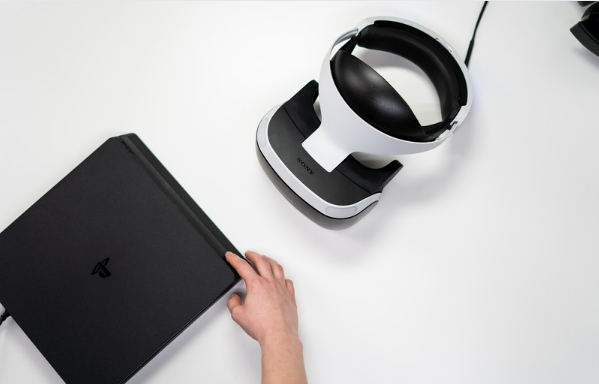
Price
VR and AR low-vision electronic glasses (E-glasses) are two different things and each has its strengths and weaknesses. Additionally, VR low-vision electronic glasses (E-glasses) are more affordable than AR smart glasses. This is because AR’s system and software are more sophisticated, which raises the cost of AR over that of VR.
Choose the Right E-glasses
There is a huge range of VR and AR low-vision electronic eyewear available for people with any level of visual impairment.
Our suggestion is to try it on rather than just reading the user manual before buying. Most distributors or sellers now offer two-week or even 30-day free trials to new and eligible subscribers. It is better to contact the local low-vision supplier to get a free trial period before you decide to buy it.
Another point that should be considered is whether you need a cool garbage or something that is truly designed for visually impaired people. That is, some AR or VR low-vision eyewear combines numerous features and therefore is very expensive.
But are these functions truly necessary?
And is it necessary to pay them hundreds or even thousands of dollars more?
The fact is that multiple function combinations can be challenging for most visually impaired people. Please remember, the basic guideline for choosing low vision aids is to select something that is both user-friendly and effective. Besides, a simplified user interface can satisfy the daily needs of those with impaired eyesight, and complex functions make it difficult for people with impaired eyesight to operate and therefore just leave them to gather dust.
Additionally, some low-vision electronic glasses (E-glasses) offer extra useful functions to help those visually impaired people. Like the Acesight series’ outline objects function enable the user to see small things, like a small pill, and sharply defined edges of objects, such as the borders of steps and the frames of doors and windows. Another awesome function of Acesigt series is narrow mode, which guarantees users with central vision loss or partial vision loss see the entire picture.
Which solution of low vision electronic glasses is the best for you? Try it Out and YOU decide it!

